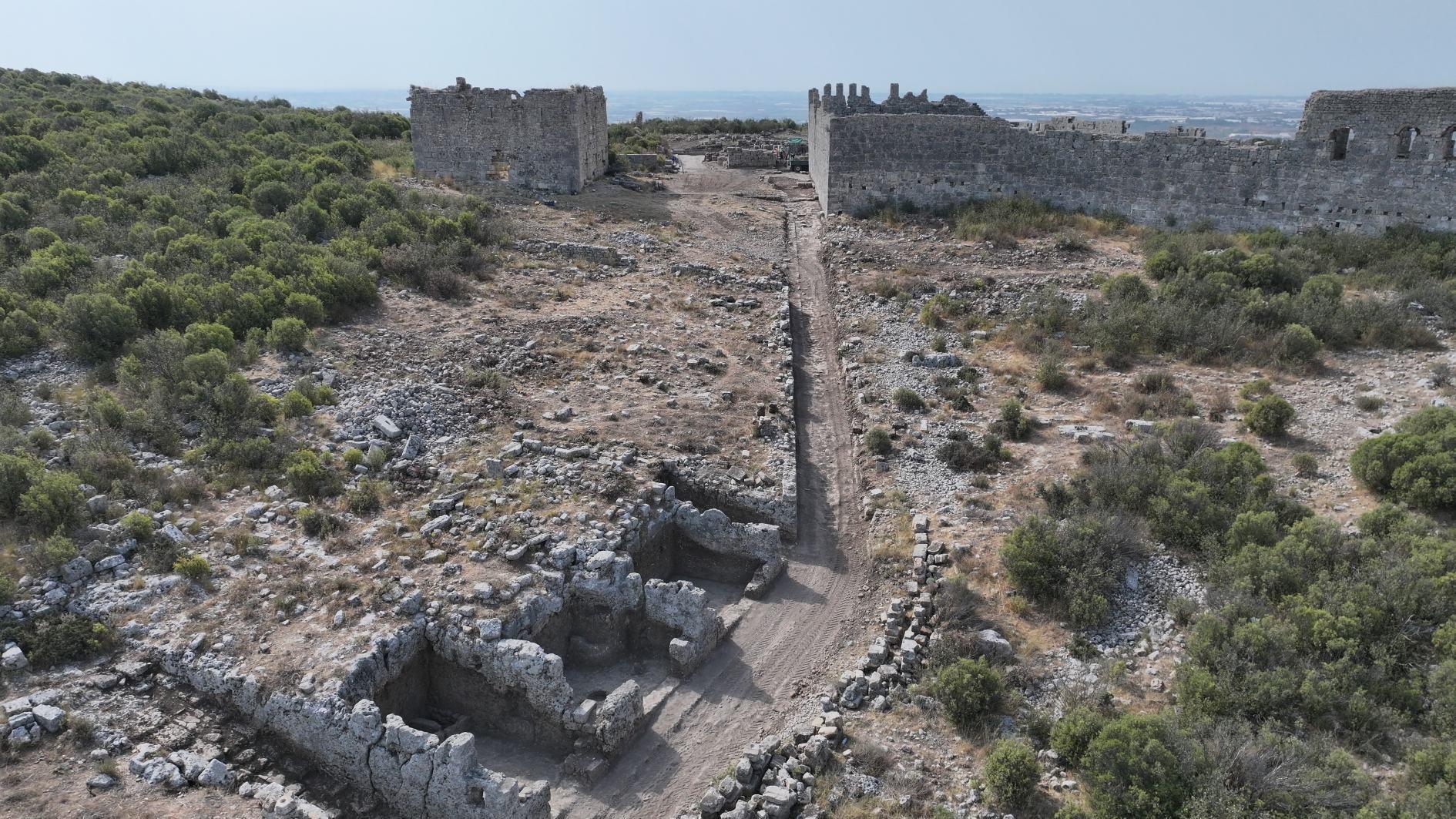
Excavations at the ancient city of Sillyon in the Serik district of Antalya have unearthed the main street used during the Hellenistic, Roman, Byzantine, Seljuk, Beylik and Ottoman periods, which is now being brought to tourism.
Founded on a high hill at the beginning of 2000 B.C. due to security concerns, the ancient city of Sillyon has been undergoing excavations throughout the year. As part of the “Heritage to the Future” project implemented by the Culture and Tourism Ministry, the main street, which was used during six different periods and uncovered after tons of soil were removed, continues to be studied.
Measured at one kilometer, the main street allows visitors to see structures and artifacts belonging to the Hellenistic, Roman, Byzantine, Seljuk, Beylik and Ottoman periods all together.
Murat Taşkıran, head of the Sillyon excavations and a faculty member at Pamukkale University, told Anadolu Agency that they were conducting an international project with a team of about 50 experts from Türkiye and abroad, and that they were carrying out not only archaeological work in the city but also interdisciplinary studies such as geoarchaeology, zoology, paleoarchaeology, geophysics and geology.
Taşkıran said this year’s excavations focused on the main street. “The main street starts from the lower part and continues up to the acropolis, with a length of 1 kilometer and a width ranging from 4 to 10 meters. The main street was continuously used from the foundation of the city to the last period and has the feature of bearing traces of every era. Both a security point was established on the street, and it has a different structure to prevent the city’s defense system from being breached. The street contains almost all the structures on it,” he said.
Explaining that the street sometimes passes by the necropolis and sometimes in front of an ancient building, Taşkıran said they also saw a mosque built during the Ottoman period, which shows that the city hosted the entire historical process from its founding to the late Ottoman era.
220 Seljuk graves identified
Taşkıran stated that the street has the characteristic of being a “cultural street” that embraces all civilizations.
He noted that one of the most important features of the street is the necropolis, with graves placed on the right and left sides of a nearly 300-meter area. “On the street we can see Hellenistic, Roman and Byzantine tombs. In the ongoing works, we identified 220 graves belonging to the Anatolian Seljuk period. We saw that this was a Turkish-Islamic cemetery, and even discovered an infant burial in one of the graves,” he said.
Taşkıran said the street is preserved and solid, and its flooring retains its original features.
Explaining that inscriptions used in different periods were found in certain parts of the street, Taşkıran said, “The main street of Sillyon is a crossroads of history. When you walk here, you can see an Ottoman mosque, an Ottoman fountain that still flows, a Roman chamber tomb, groups of Seljuk graves, sacred areas, inscriptions, statue bases, city gates and traces of different eras. You will see the mosque built by the Seljuks, the shops from the Roman period and the cisterns. In other words, history reveals itself on this street with all its vitality.”
He emphasized that after hundreds of years, the street was uncovered through the dedicated work of the team.